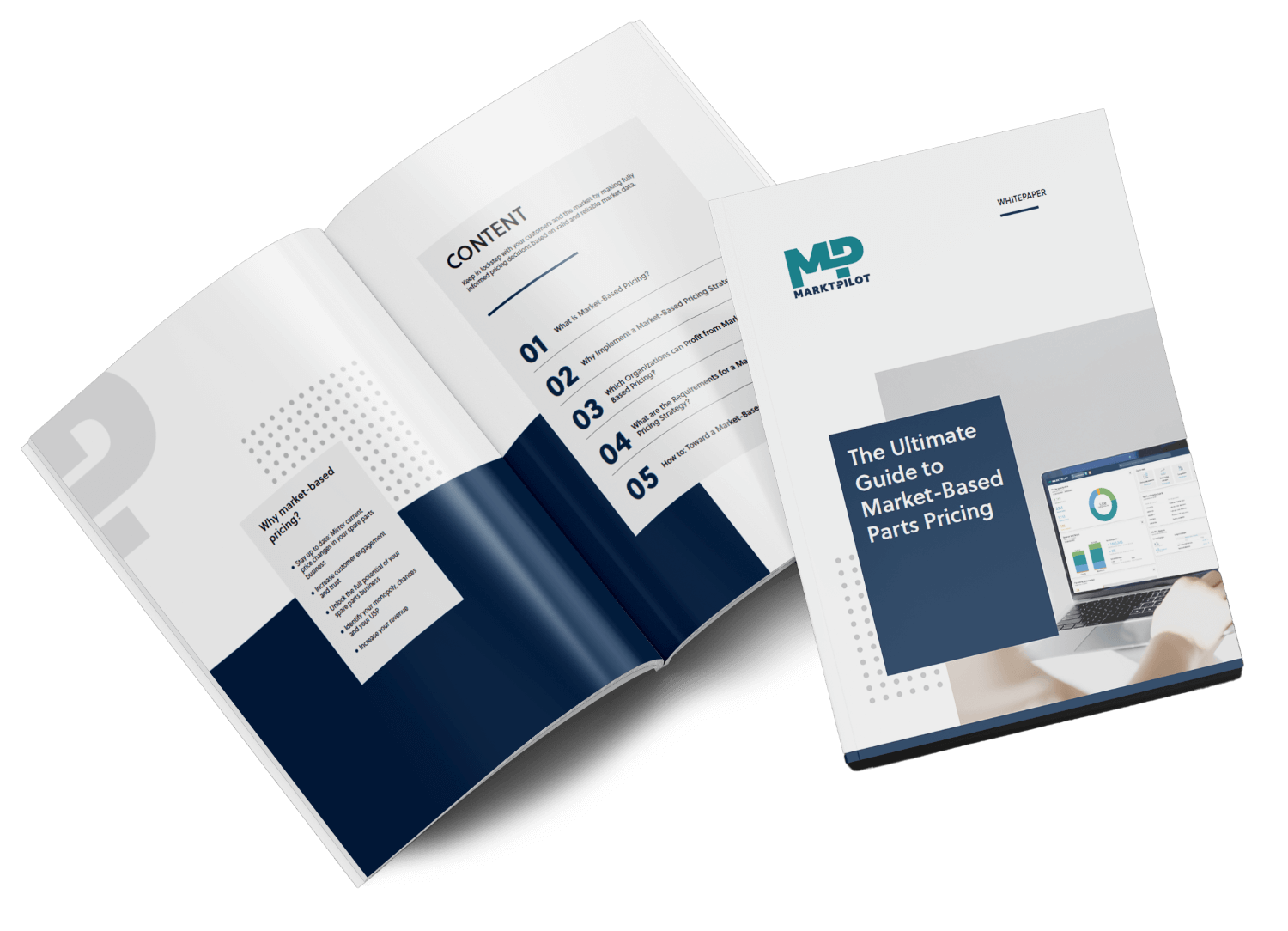Successful Cross- and Up-Selling Initiatives Combined with Proactive Sales Through Market-Based Pricing
Cross-selling and up-selling initiatives are among the most effective levers in the spare parts business. Find out why!
Competitor-based pricing is a strategic approach that involves setting the price of a product or service based on the prices charged by competitors in the market.

Competitor-based pricing is a strategic approach that involves setting the price of a product or service based on the prices charged by competitors in the market. For machine manufacturers, adopting a competitor-based pricing strategy can be crucial for staying competitive and maximizing profitability. In this article, we will delve into what competitor-based pricing is, considerations for implementing it, and key information that machine manufacturers need to know.
Competitor-based pricing, sometimes referred to as competitive pricing or market-based pricing, is a pricing strategy where a company sets its prices based on the prices of similar products or services offered by competitors. This approach considers the industry's pricing landscape to ensure a company's pricing is in line with market standards.

Ultimate Guide to Market-Based Pricing
Everything you need to know about the top pricing strategy for machine manufacturers.
Consider how your pricing strategy will be perceived by customers. While being competitive is crucial, it's essential to avoid price wars that may negatively impact the perceived value of your machines. Striking the right balance between price and perceived value is key.
Regularly benchmark your prices against competitors. This involves continuous monitoring of competitor pricing strategies to identify trends, opportunities, and potential areas for adjustment.
Competitor-based pricing should not be rigid. Machine manufacturers should be flexible and adapt their pricing strategies based on changes in the competitive landscape or shifts in market dynamics.
Competitor-based pricing is a long-term strategy. It requires ongoing analysis and adjustment to remain effective. Machine manufacturers should view it as a dynamic process that evolves with the market.
Preventing price erosion requires a combination of differentiation and strategic pricing. Regularly assess your cost structure, enhance product features, and consider value-added services to maintain a competitive edge without solely relying on lower prices.
Competitor-based pricing is a valuable tool for machine manufacturers seeking to establish competitive prices in the market. By combining a thorough understanding of the competitive landscape, differentiation strategies, and a commitment to continuous analysis and adaptation, manufacturers can optimize their pricing structures for long-term success. Implementing a well-balanced competitor-based pricing strategy is essential in achieving profitability while maintaining competitiveness in the dynamic field of machine manufacturing.

The PRICERADAR identifies opportunities in your parts pricing - realizing these potentials means adjusting prices.

Competing in today's marketplace requires a parts pricing strategy that is in line with what the market will bear...

Discover how to sustainably increase your revenue with market-based spare parts pricing.
MARKT-PILOT is a leading provider of software for market-based spare parts pricing in machine manufacturing. The solutions enable OEMs to conduct precise market price research, automated price recommendations and optimized strategies. Customers benefit from increased sales, margins and customer satisfaction in their parts business.

Cross-selling and up-selling initiatives are among the most effective levers in the spare parts business. Find out why!
Explore the key manufacturing trends shaping 2026 and learn how to turn uncertainty into opportunity with actionable insights for machine...
Discover how Okuma boosted parts profitability with MARKT-PILOT’s data-driven pricing strategy.